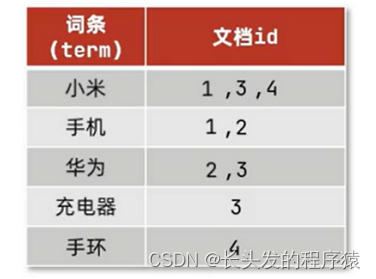
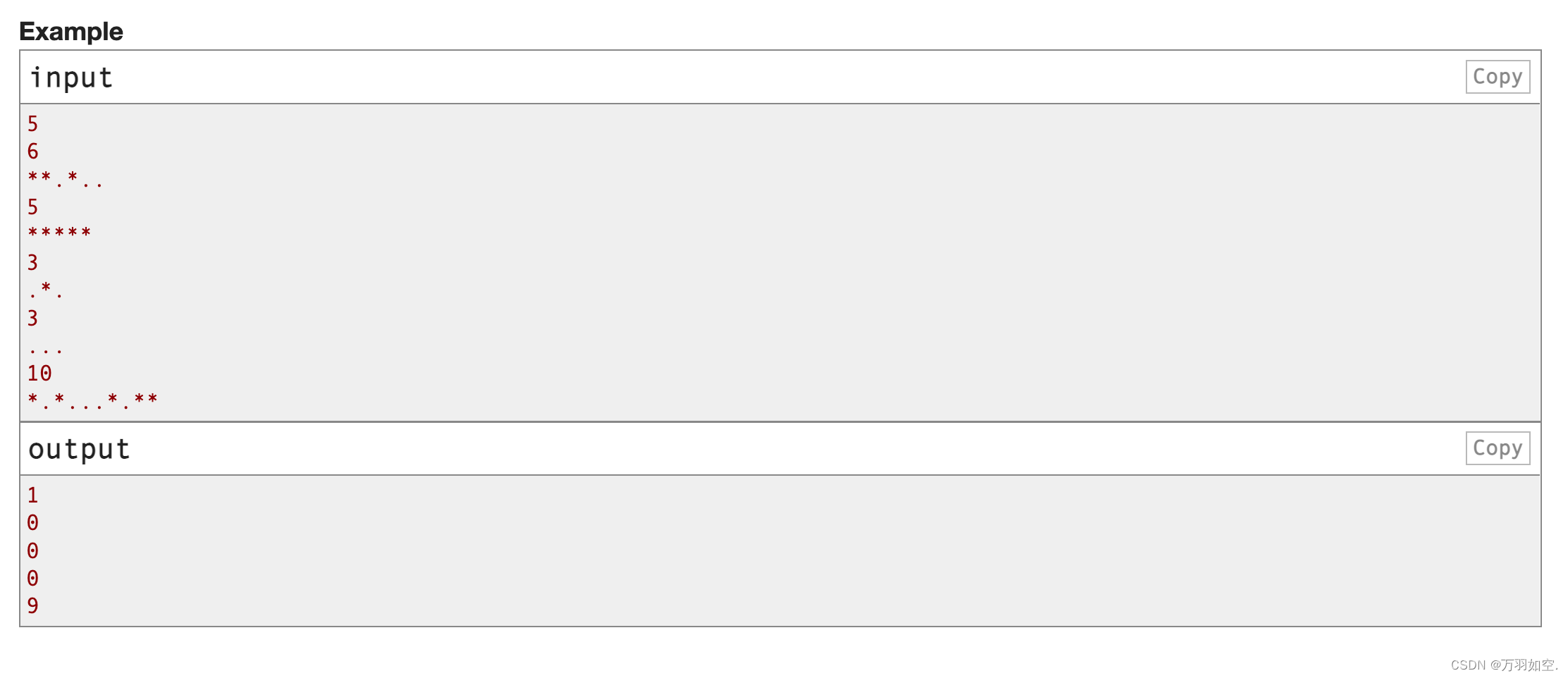
翻译:
你正在玩“安排羊”游戏。这个游戏的目标是让羊排好队。游戏中的关卡是由长度为𝑛的字符串描述的,由角色的’组成。'(空格)和'*'(绵羊)。在一个动作中,你可以移动任何羊向左或向右移动一个方格,如果相应的方格存在并且为空的话。一旦羊群排好队,游戏就结束了,也就是说,羊群之间不应该有空格子。
例如,如果𝑛=6,并且关卡由字符串“**.*..”描述,那么就可能出现以下游戏场景:
4位的羊向右移动,水平状态:“**..*.”;
2位的羊向右移动,水平状态:“*.*.*.”;
位置1的羊向右移动,水平状态为:“.**.*.”;
3位的羊向右移动,水平状态:“。*.**.”;
位置2的羊向右移动,水平状态:“..***.”;
羊排好队,比赛结束。
对于一个特定的关卡,你需要确定完成该关卡所需的最小移动数。
输入
第一行包含一个整数𝑡(1≤𝑡≤104)。然后是𝑡测试用例。
每个测试用例的第一行包含一个整数𝑛(1≤𝑛≤106)。
每个测试用例的第二行包含一个长度为𝑛的字符串,由字符'组成。’(空白)和‘*’(绵羊)——关卡的描述。
可以保证在所有测试用例中𝑛的总和不超过106。
输出
对于每个测试用例,输出完成关卡所需的最小移动数。
例子
inputCopy
5
6
* * . * . .
5
*****
3.
*。
3.
...
10
*.*...*.**
outputCopy
1
0
0
0
9
思路:
要把羊移动到一起,所以我们可以设一个方向,集体往哪边移动,最左和最右,中间都会有多余不必要的操作,而且两端的移动次数叠加都是最大的,所以我们选中心点,然后来让两边移动。
代码:
#include <iostream>
#include <algorithm>
#include <string.h>
#include <string>
#include <math.h>
#include <stdio.h>
#include<vector>
#include<queue>
#include<map>
#include<set>
#include<tuple>
#include<numeric>
#include<stack>
using namespace::std;
typedef long long ll;
int n,t;
inline __int128 read(){
__int128 x = 0, f = 1;
char ch = getchar();
while(ch < '0' || ch > '9'){
if(ch == '-')
f = -1;
ch = getchar();
}
while(ch >= '0' && ch <= '9'){
x = x * 10 + ch - '0';
ch = getchar();
}
return x * f;
}
inline void print(__int128 x){
if(x < 0){
putchar('-');
x = -x;
}
if(x > 9)
print(x / 10);
putchar(x % 10 + '0');
}
string s;
void solv(){
cin>>n>>s;
vector<int>q;
int bj=0;
for (int i =0; i<s.size(); i++) {
if (i!=0&&s[i]!=s[i-1]) {
bj=1;
}
if (s[i]=='*') {
q.push_back(i);
}
}
if (!bj) {
printf("0\n");return;
}
int zz=(q.size())/2;
zz=q[zz];
ll ans=0;
int ff=0,se=0;
int l=zz-1,r=zz+1;
while (l>=0) {
if (s[l]=='*') {
ans+=zz-l-1-ff;
ff++;
}
l--;
// printf("%lld\n",ans);
}
while (r<s.size()) {
if (s[r]=='*') {
ans+=r-zz-1-se;
se++;
}
r++;
// printf("%lld\n",ans);
}
printf("%lld\n",ans);
}
int main(){
ios::sync_with_stdio(false);
cin.tie(); cout.tie();
cin>>t;
while (t--) {
solv();
}
return 0;
}

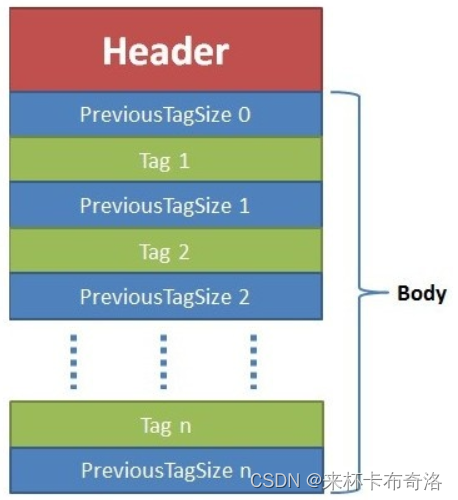
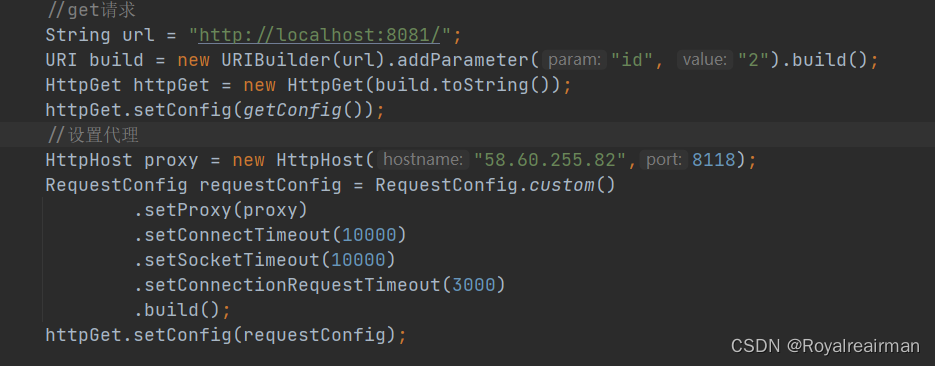

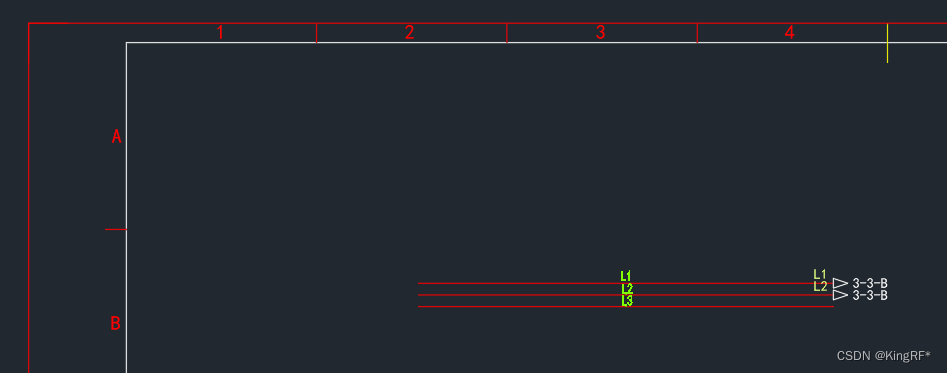




![[附源码]计算机毕业设计JAVA小超市进销存管理系统](https://img-blog.csdnimg.cn/aa29b8e1bd3044b1ba62320d4533be9c.png)
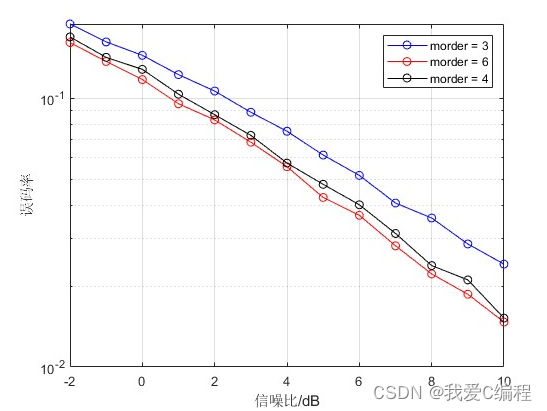



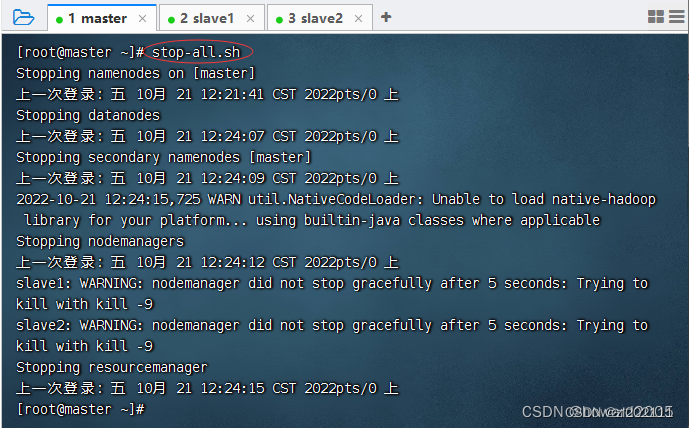
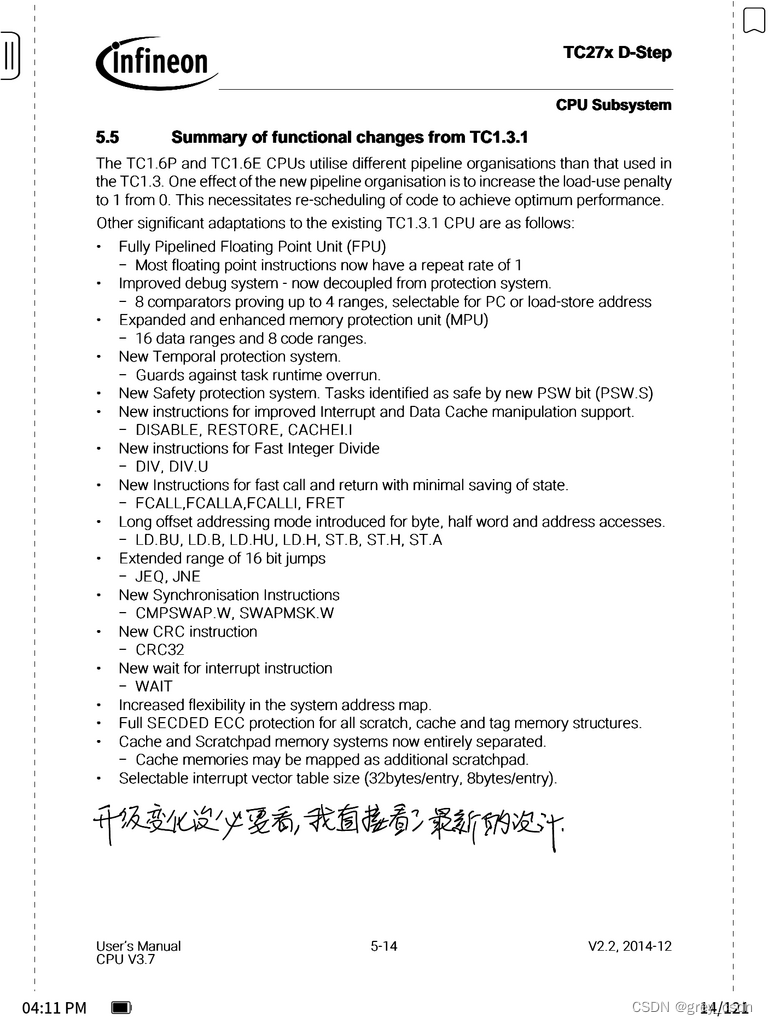
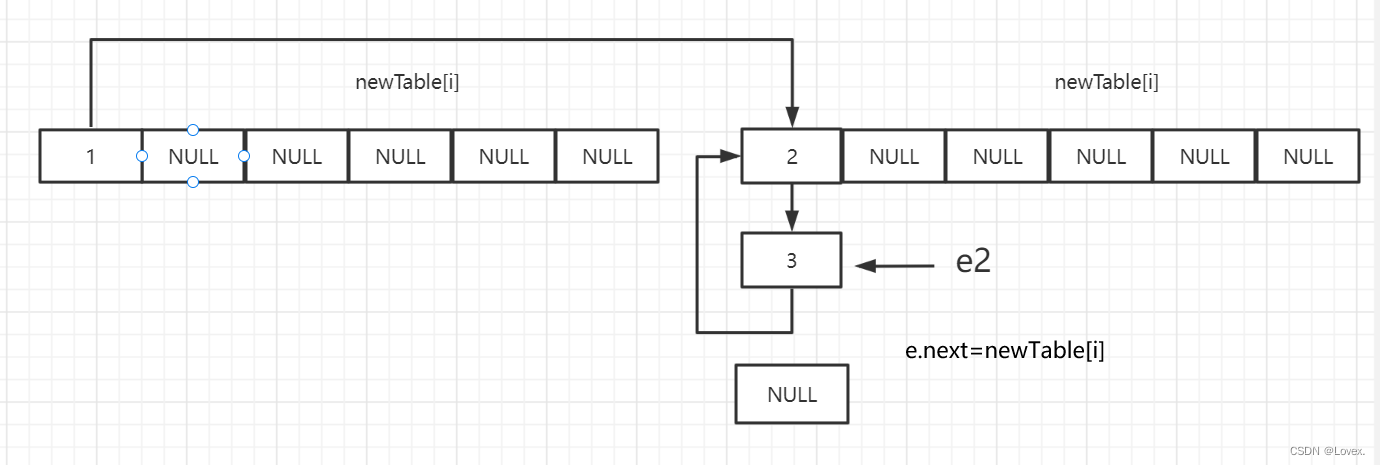
![[MAUI] 开篇-初识MAUI](https://img-blog.csdnimg.cn/339276249a30429fa909b447ccf5e3d7.png)
